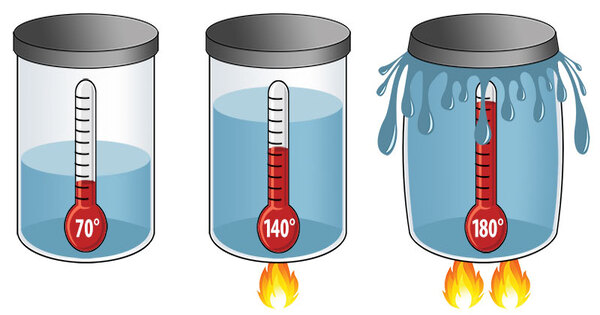Thermal expansion describes the tendency of materials to alter shape, area, and volume in response to temperature variations. It is the tendency of matter to alter shape, area, volume, and density in response to a change in temperature, excluding phase transitions. When a substance is heated, its particles accumulate kinetic energy, which causes them to vibrate and travel faster. This greater mobility causes the material to expand.
Temperature is proportional to a substance’s average molecular kinetic energy. When a substance is heated, its molecules begin to vibrate and move more, usually resulting in greater space between them. Substances that contract with rising temperature are uncommon and only occur within a narrow temperature range.
The ratio of relative expansion (also known as strain) to temperature change is known as the material’s coefficient of linear thermal expansion, and it varies with temperature. As the energy in particles increases, they begin to move faster and faster, decreasing the intermolecular interactions that hold them together and so expanding the substance.
There are three main types of thermal expansion:
- Linear Expansion: This occurs when a material expands in one dimension, such as length. Linear expansion is commonly observed in solids, such as metal rods or rails.
- Area Expansion: This refers to the expansion of a material in two dimensions, such as length and width. It’s often seen in materials like sheets of metal or glass.
- Volumetric Expansion: This type of expansion involves changes in all three dimensions of a material, resulting in an increase in volume. Liquids and gases typically exhibit volumetric expansion.
The degree of expansion is determined by the material’s coefficient of thermal expansion (CTE), which describes how much a material expands per unit length (or area, or volume) per unit temperature change. Because various materials have different CTEs, they expand at different rates when exposed to the same temperature change.
Thermal expansion can have practical applications in a variety of sectors and in everyday life. Engineers and architects, for example, must consider thermal expansion when constructing structures, as it can have an impact on building integrity and stability. It is also important in the design of systems that involve temperature changes, such as pipelines, bridges, and railways.
















